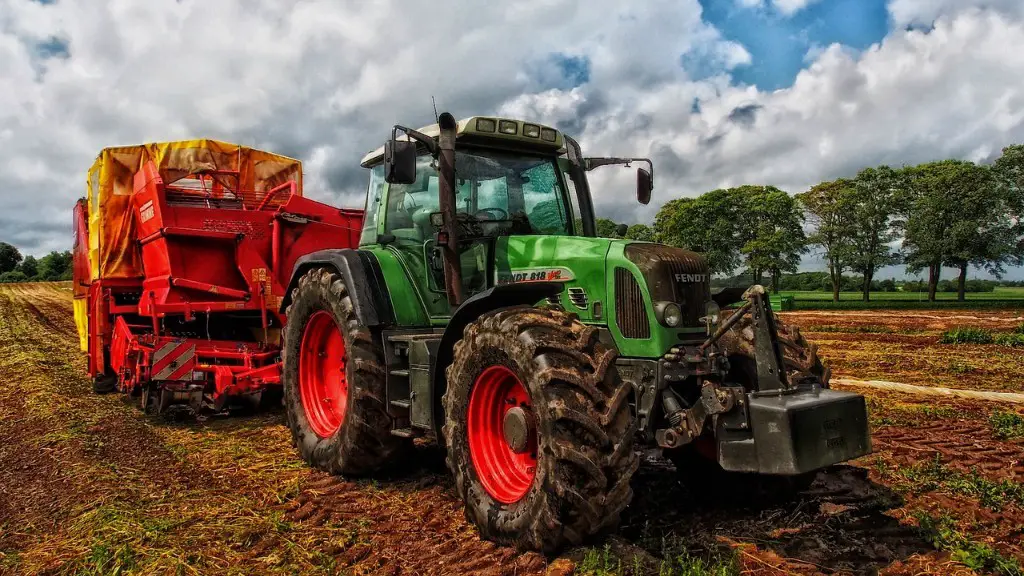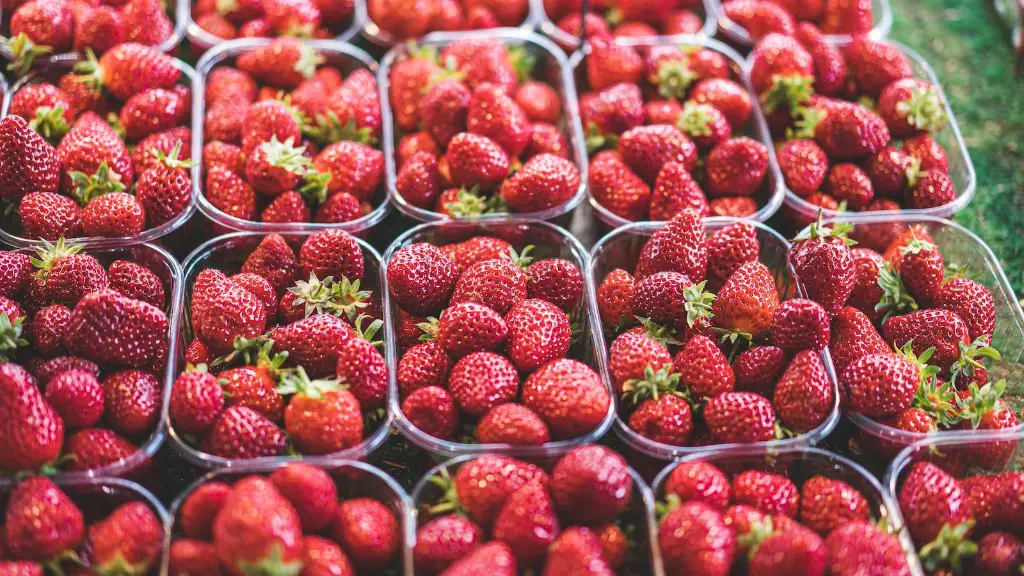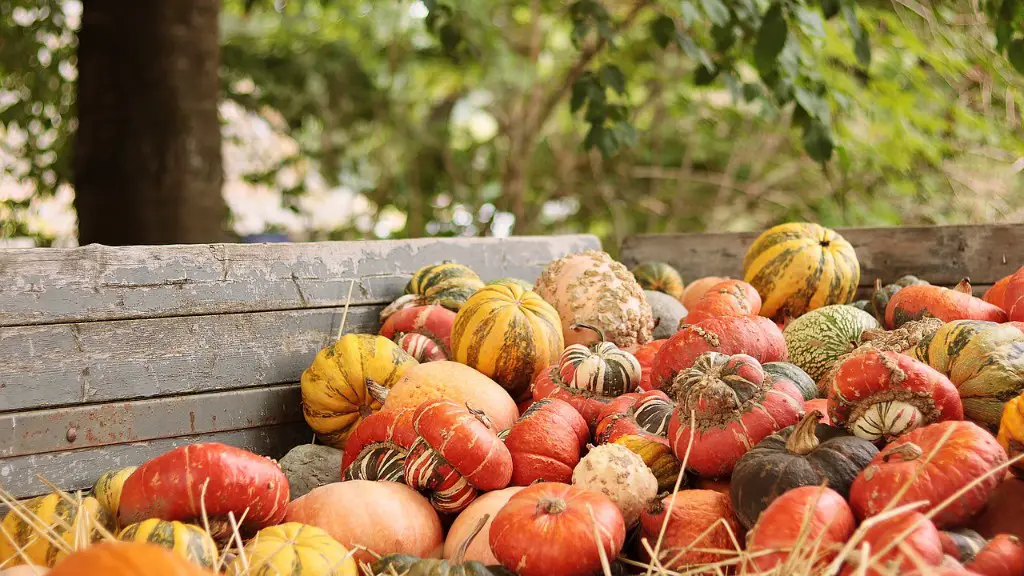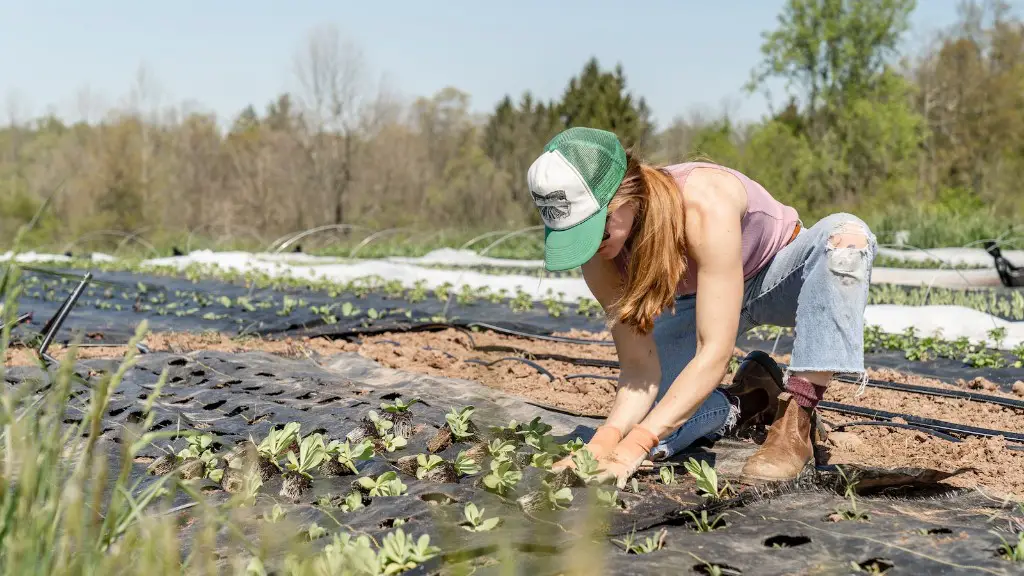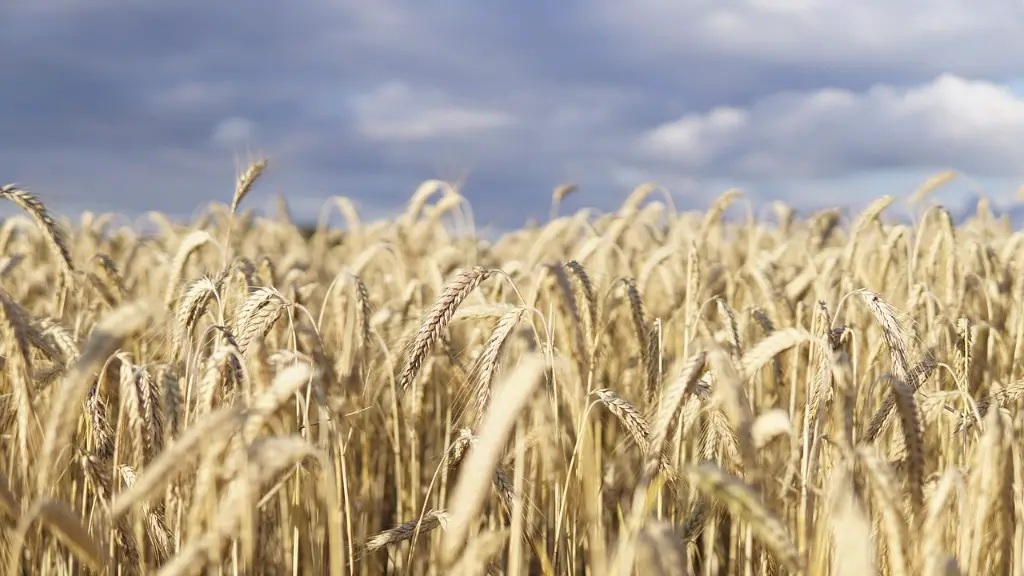Biotechnology is the application of scientific and engineering principles to the processing of materials by biological agents to provide goods and services. Agriculture is the art and science of cultivating the soil, growing crops and raising livestock. It includes the preparation of plant and animal products for people to use and their distribution to markets.
Biotechnology is used in agriculture to help farmers improve crop yields, reduce the amount of pesticide and herbicide needed, and develop plants that are resistant to insect pests and diseases.
What are some examples of biotechnology being used in agriculture *?
Biotechnology has played a significant role in agriculture for many years, and its applications are constantly expanding. Here are five examples of how biotechnology is being used in agriculture today:
1. Genetically modified crops are one of the most well-known applications of biotechnology in agriculture. By manipulating the genes of crops, farmers can achieve desired traits such as increased resistance to pests and herbicides, improved nutritional content, and faster growth rates.
2. The development of biofuels is another important application of biotechnology in agriculture. Biofuels are alternative fuels made from plant materials, and they offer a more sustainable and environmentally friendly option than traditional fossil fuels.
3. Improving plant growth is another way that biotechnology is being used in agriculture. By understanding and manipulating plant genes, scientists can develop crops that grow faster and require less water and fertilizer.
4. Improving plant seed quality is another application of biotechnology in agriculture. By using genetic engineering, scientists can create seeds that are more resistant to disease and pests, and that have improved nutritional content.
5. Finally, biotechnology is also being used to improve animal health and breeding. By understanding and manipulating the genes of animals, scientists can develop healthier and more productive
Agricultural biotechnology is an important tool in the world’s effort to combat food insecurity and malnutrition. Agricultural biotechnology can help boost food production in both the developed and the developing worlds and reduce vulnerability to pests, viruses, and drought. Agricultural biotechnology can help farmers in the developing world produce more food with less water and fewer inputs, and can help farmers in the developed world produce food more efficiently and with less environmental impact. Agricultural biotechnology can also help to improve the nutritional quality of food crops and to develop crops that are more resistant to pests and diseases.
What type of biotechnology is commonly used in agriculture farming )
Many new plant varieties being developed or grown by farmers have been produced using genetic engineering, which involves manipulating the plant’s genes through techniques of modern molecular biology often referred to as recombinant DNA technology. This has led to some controversy, as there are concerns about the safety of these genetically modified plants. However, many scientists believe that these plants are safe and that the benefits of using them outweigh the risks.
Biotechnology has played a big role in increasing crop productivity. By introducing qualities such as disease resistance and increased drought tolerance, crops can now withstand more difficult conditions. This has allowed researchers to select genes for disease resistance from other species and transfer them to important crops, which has led to higher yields.
What are 5 biotechnology examples?
Biotechnology is a rapidly growing field with a wide range of applications. DNA profiling and DNA cloning are two of the most well-known applications of biotechnology, but the field also includes transgenesis, genome analysis, and stem cells and tissue engineering.
By developing crops that are pest resistant, requiring fewer pesticides to be used, planting crops in shaded areas, and harvesting crops that have thick stems and leaves, water crops with a recycled irrigation system.
What are 2 examples of using biotechnology?
Biotechnology is having a profound impact on medicine, with the development of synthetic insulin and growth hormone, and diagnostic tests to detect various diseases. Biotechnology is also helping to refine industrial processes, environmental cleanup, and agricultural production.
• Biofuel: We can use plants and other organic matter to create biofuel, which can be used to power our vehicles and other machinery.
• Vaccines: Biotechnology is used to create vaccines, which help protect us from diseases.
• Bioremediation: Biotechnology can be used to clean up environmental pollution.
• Pest Resistant Crops: Biotechnology can be used to create crops that are resistant to pests, which can help reduce crop damage and improve yields.
• Environmental Engineers: Environmental engineers use biotechnology to develop new ways to clean up environmental pollution.
• Cheese Production: Cheese is produced using biotechnology.
• Alcoholic Drinks: Alcoholic drinks are produced using biotechnology.
• Forensic science – DNA fingerprinting: Forensic science uses biotechnology to identify people through DNA fingerprinting.
What are the 4 major biotech crops
Biotech crops have expanded beyond the big four (maize, soybeans, cotton, and canola) to give more choices for many of the world’s consumers and food producers. With new innovations in biotech crops, there are now more choices than ever before for farmers and consumers alike. This is a positive development for the world food supply, as it gives farmers more options to grow crops that are best suited for their region and consumers more choices when it comes to the foods they eat.
The United States is one of the world’s leading producers of biotech crops, with corn, cotton, and soybeans being the main crops grown. Other important biotech crops grown in the country include canola, squash, papaya, alfalfa, and sugarbeet. The use of biotechnology in agriculture has helped to improve yields and decrease the use of chemical pesticides and herbicides, making it an important tool in sustainable agriculture.
What are 2 examples of using biotechnology to solve a problem?
Biotechnology has led to the development of insulin that does not come from pigs, which is helpful for patients who are allergic to pig insulin. Other treatments developed through biotechnology include interferon therapy to boost the immune system, human growth hormone, and the hepatitis B vaccine.
Biotechnology is used to produce a wide variety of crops, including soybeans, corn, cotton, canola, papaya, tomatoes and squash. In addition, many common food products, such as cheese and bread, are made using enzymes or yeast that are produced through biotechnology.
How can biotechnology improve the living standards of farmers
The introduction of GM crops has helped to reduce reliance on chemical pesticides, which is beneficial for both farmers and consumers. GM crops are designed to be resistant to pests, meaning that farmers can use fewer pesticides and consumers are exposed to fewer harmful chemicals. In addition, GM crops are often more resilient to transportation and storage, meaning that post-harvest losses are reduced.
There are many different applications for biotechnology in the environment, including waste management and pollution control. One area of environmental biotechnology that is receiving a lot of attention is the use of microbes to clean up oil spills. Microbes are able to break down the oil into simpler compounds that are less harmful to the environment.
Biotechnology is also being used to develop new methods for treating medical conditions. For example, researchers are using biotechnology to develop new vaccines and therapies for cancer. In addition, biotechnology is being used to create new diagnostic tools that can be used to detect diseases earlier.
The industrial application of biotechnology includes the use of microbes to produce chemicals and other materials. For example, yeast is used to produce ethanol, while bacteria are used to produce enzymes that are used in laundry detergents. In addition, biotechnology is being used to develop new methods for producing biofuels.
Finally, biotechnology is being used to improve agriculture. For example, biotechnology is being used to develop new varieties of crops that are resistant to pests and diseases. In addition, biotechnology is being used to develop new methods for improving the quality of food.
What are the most widely grown biotech crops?
There are only a few types of GMO crops that are grown in the United States, but some of these GMOs make up a large percentage of the crops grown. For example, soybeans, corn, sugar beets, canola, and cotton are all types of GMOs that are grown in the US.
Genetic engineering is a process by which scientists can take a beneficial gene from one organism and transfer it into another organism. This process can be used to create crops like modern corn varieties and seedless watermelon.
Final Words
There are many ways in which biotechnology is used in agriculture. One common example is the use of genetically modified crops. These crops have been modified to be resistant to herbicides or pests, which can help farmers to reduce the amount of chemicals they need to use, and also to improve yields. Other examples of biotechnology in agriculture include the use of microorganisms to produce biofertilizers, or the use of tissue culture techniques to produce disease-resistant plants.
Biotechnology is increasingly being used in agriculture in order to improve crop yields and to make plants more resistant to pests and diseases. The use of biotechnology in agriculture is expected to continue to grow in the future as farmers look for ways to improve their crops and to protect their crops from pests and diseases.
